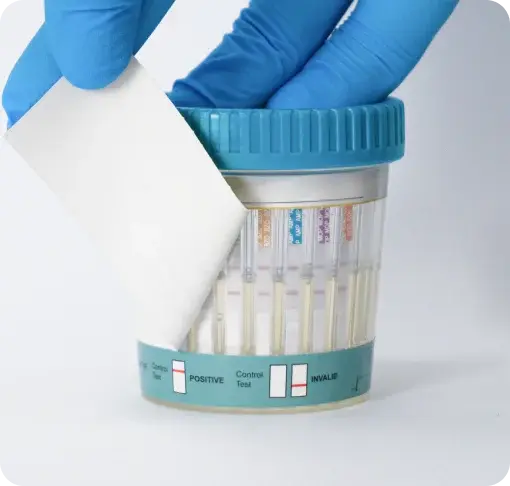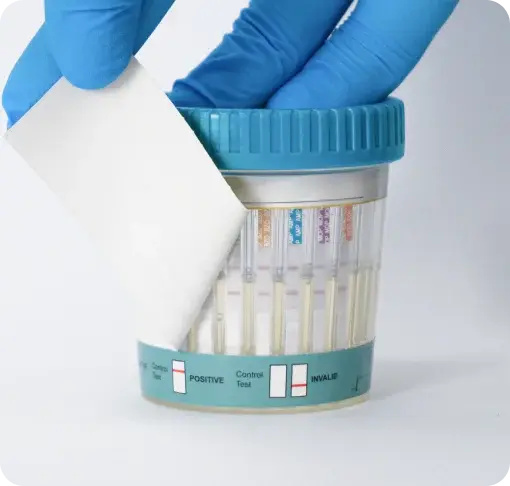A Complete Guide for Employers and Healthcare Providers
Cocaine is one of the most misused Class A drugs in the UK. With usage and availability on the rise, employers, clinicians, and occupational health teams must be equipped with the right tools to detect and manage cocaine use in professional and clinical settings.
In this blog, we explore how cocaine is detected, what it shows up as, how long it stays in the system, and what to watch out for when reviewing test results in workplace and healthcare environments.
What Is Cocaine?
Cocaine (benzoylmethylecgonine) is a powerful central nervous system stimulant derived from coca plant leaves. Though it has limited legitimate medical use as a local anaesthetic in ENT surgery, its recreational use is illegal and potentially dangerous.
Street names include:
-
Blow
-
Coke
-
Charlie
-
Crack (a smokable form of cocaine)
-
Powder
-
Snow
Will Cocaine Show Up on a Drug Test?
Yes. Cocaine will show up on all standard drug tests, but it’s typically the metabolite benzoylecgonine (BZE) that is detected. This substance forms when the body breaks down cocaine and remains in the system longer than the drug itself—making it the primary marker used in most drug screens.
Other possible cocaine metabolites include:
-
Norcocaine
-
Cocaethylene (when used with alcohol)
-
Hydroxycocaine
These are detected in common multi-panel drug tests, such as 5-, 6-, 9-, 12-, 14-, and 16-panel screens.
Which Drug Tests Detect Cocaine?
For workplace and clinical use, the most common test types include POC urine and POC saliva testing:
Cocaine Urine Test
-
Detection Window: Typically 2–10 days (up to 3 days for infrequent users)
-
Use Case: Pre-employment, random testing, return-to-duty programs
-
Cut-Off Levels: 150–300 ng/mL (varies by lab and policy)
-
Advantages: Cost-effective, non-invasive, reliable
Cocaine Saliva Test
-
Detection Window: Up to 48 hours after use
-
Use Case: On-site/POCT testing, post-incident, reasonable suspicion
- Advantages: Quick results, easy administration
How Long Does Cocaine Stay in the System?
| Test Type | Detection Window |
| Urine | 1-5 days |
| Saliva | 1-3 days |
Factors that influence detection times:
-
Frequency of use
-
Dosage
-
Individual metabolism
-
Body mass and hydration
-
Use of alcohol (creates cocaethylene)
Can a False Positive Happen?
False positives for cocaine are rare, but they can occur—especially in rapid point-of-care tests (POCT). Possible causes include:
-
Certain local anaesthetics (e.g., lidocaine)
-
Some antibiotics and antidepressants
-
Contaminated surfaces or sample mishandling
This is why confirmation testing—using gas or liquid chromatography-mass spectrometry (GC-MS or LC-MS)—is always recommended after a presumptive positive result.
What Does Cocaine Look Like on a Drug Test Result?
At AttoSure, our drug tests have different testing strips. Cocaine will usually be presented at COC. The COC strip is looking to detect the metabolite benzoylecgonine (BZE), which is present in the body after the consumption of cocaine.
If the COC testing strip shows cocaine is detected, this is termed a non-negative—even if the user is no longer experiencing its effects. In healthcare settings, this is usually sufficient for the healthcare manager to question the user about their drug taking activities. In workplaces, the correct procedure is to follow up the point of care drug test with a laboratory confirmation, to rule out a false positive or sample contamination.
Different employers have different stances on what to do in the case of a non-negative. In some cases, the employee will be asked to take leave until the matter is resolved. It would be unwise for an employer to terminate employment until the laboratory confirmation test has been returned.
Why Employers and Clinicians Test for Cocaine
Cocaine impairs judgment, increases risk-taking, and can be dangerous in safety-sensitive roles. That’s why it's a routine component in:
-
Workplace drug and alcohol policies
-
Pre-employment and routine screening
-
Post-incident and return-to-work testing
-
Clinical assessments and addiction monitoring
Employers in construction, transport, healthcare, education, and manufacturing often require regular cocaine testing to maintain a safe, compliant work environment.
Final Thoughts
Cocaine use is a serious workplace and public health concern. Reliable detection through urine and saliva testing helps employers and clinicians make informed decisions to support safety, compliance, and employee wellbeing.
At AttoSure, we offer compliant, confidential, and rapid cocaine testing for healthcare providers and employers. Our lab partners deliver accurate results with professional interpretation—ensuring you stay informed and protected.
You can also test your knowledge with our expert-designed quizzes tailored for workplace and healthcare settings. We pride ourselves on delivering first-class educational content, created by our team of scientific experts. Browse our selection of quizzes below.
Contact Us




